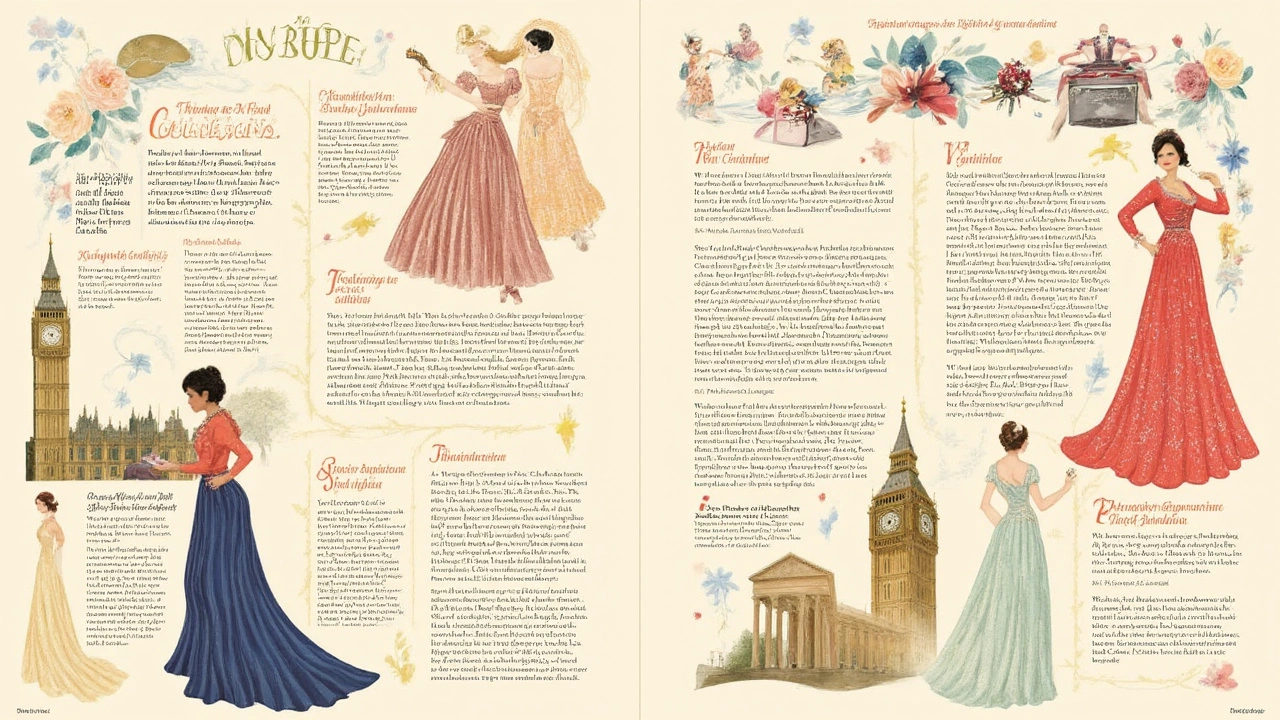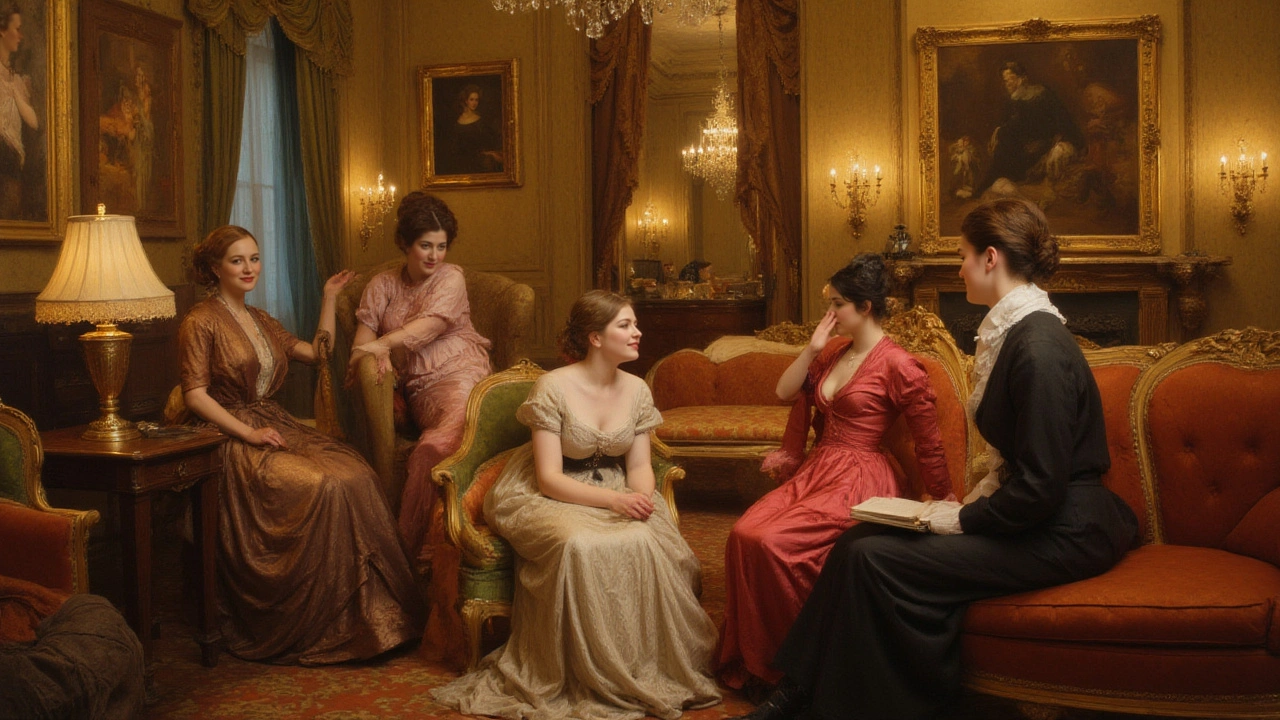What if I told you that some of the most iconic pieces in art and literature took shape because of a courtesan? Paintings hanging in major galleries, plays studied in classrooms, and even some jaw-dropping scandals in history—all connected by these women and men who navigated both the bedroom and the drawing room with equal skill. It’s easy to write off courtesans as figures on the fringes, but their fingerprints are everywhere across our cultural landscape. Their stories—sometimes glamorous, sometimes tragic—show how they nudged, teased, and even bulldozed society’s creative boundaries.
What Is a Courtesan, and How Did They Shape Art and Culture?
Courtesans weren’t just companions to the rich and powerful; they were influencers in a world long before Instagram. In Renaissance Italy, Parisian salons, and even in Japan’s floating world, courtesans moved in elite circles, often better educated than the nobles they entertained. They offered stimulating conversation, insight, and companionship—along with physical intimacy.
What set them apart was access. Most women (and many men) of their era couldn’t step outside rigid social boundaries, but courtesans could. This freedom attracted artists and writers who wanted a different muse. Leonardo da Vinci, Toulouse-Lautrec, and Titian found inspiration among these women, crafting drawings and canvases that now define whole eras. Some courtesans were even artists themselves—Veronica Franco, for instance, published poetry in 16th-century Venice and held her own in debates with male intellectuals. Their salons became pressure cookers for new ideas, where legends of art, music, and philosophy mingled over wine and wit.
Why Does Courtesan Influence on Art and Culture Matter?
The ripple effect is massive. By inspiring paintings and poems, courtesans helped shape what we now consider cultural masterpieces. Botticelli’s Venus—supposedly based on the legendary Simonetta Vespucci, who had close ties to the Medici court—remains a symbol of beauty centuries later. Without courtesan muses, key works by Manet, Renoir, and even Shakespeare might never have existed or would look truly different.
Beyond inspiration, these women challenged stereotypes about gender and creativity. They showed that intellect and artistry weren’t just the province of the upper-class or the male elite. Many worked as patrons, funding musicians and writers or hosting salons where revolutionary ideas were tossed around over tea, brandy, or whatever passed for a strong drink. This mattered because it opened doors. When the courtesans proved they could write verse, paint, or debate philosophy, it pressured society—albeit slowly—to rethink who belonged in artistic spaces.
How Did Courtesans Influence Society, Fashion, and the Arts?
- Courtesan influence introduced daring trends in fashion. Venetian courtesans dyed their hair vibrant shades of blonde and wore elaborate dresses—creating looks that noblewomen soon copied.
- Courtesans played key roles in developing popular music and dance. For instance, many Parisian dance crazes began in brothels and salons—the can-can started as a courtesan’s way to grab attention.
- Through their connections, they promoted struggling artists and musicians, sometimes single-handedly propping up careers. French painter Édouard Manet used courtesan Victorine Meurent as the model for his scandalous "Olympia," which shocked and reshaped the Paris art world.
- Courtesan relationships often sparked social changes. In India, tawaifs—highly trained artist-courtesans—were among the first women to act on stage, paving the way for female performers.
- They helped shape conversation around beauty and femininity. Instead of hiding behind modesty, courtesans were often witty, loud, and proud. Their confidence—and capacity to choose their lovers or clients—helped nudge broader views about agency and independence.
- Writers like Alexandre Dumas found inspiration in courtesan stories—his classic novel "La Dame aux Camélias" (The Lady of the Camellias) was based on Marie Duplessis, a famed Parisian courtesan. Her real-life tragedies fueled a wave of plays and operas, including Verdi’s "La Traviata."
Everything from perfume to the design of grand boulevards in Paris (think prostitute-lined alleyways turned chic promenades) carries a trace of their swagger. Some even argue that the birth of celebrity culture started with courtesans who marketed themselves before the paparazzi existed—think of Cora Pearl throwing herself naked onto a velvet banquet table just to make the next day’s headlines.

Courtesan Pros and Cons: What Did Society Gain and Lose?
| Pros | Cons |
|---|---|
| Spurred artistic innovation — inspired genres from painting to music | Reinforced some class divides by staying close to elite circles |
| Advanced female independence and education in times of strict gender roles | Many lives ended in tragedy due to stigma or financial instability |
| Helped preserve and share stories overlooked by mainstream history | Were often erased from traditional records or falsely vilified |
| Broke taboos around sexuality, giving society new ways to talk about desire and power | Battled exploitation, since not all courtesans had control over their life options |
It’s easy to romanticize the courtesan life, but reality was messier. Some enjoyed luxury and freedom; others faced loneliness or sudden downfalls if their fortunes turned. Yet their influence stuck. Their legend grew because what they represented—a mix of brains, boldness, and beauty—hinted at what society could become if it dropped its limits. As historian Virginia Rounding wrote,
“Courtesans were often the first women to grasp autonomy, to show wit was as alluring as beauty.”
When Did Courtesan Culture Peak, and Why Does It Still Fascinate Us?
Certain eras shine brightest: Renaissance Italy, Belle Époque Paris, Edo-period Japan. In each, courtesans became cultural icons, lionized in art and whispered about in ballrooms. The "peaks" varied, but the common thread was a burst of prosperity and changing morals—times when creativity and experimentation thrived. Venetian courtesans topped the social pyramid in the 1500s, dictating fashion and poetry. Parisian demimondaines like Liane de Pougy and Caroline Otero held salons filled with artists and aristocrats in the 19th century.
Today, people are still obsessed with their stories. Maybe it’s the drama: love affairs, secret code words, feasts that lasted all night, and jewelry that could buy a small town. Movies and books keep circling their lives—Baz Luhrmann’s "Moulin Rouge!" practically crashes through all the cliches for a reason. At heart, we stay fascinated because courtesans remind us what happens when you challenge the rules in the name of pleasure—or art.
Across TikTok and Instagram, you’ll even see influencers claiming the title "modern courtesan," channeling vintage confidence with a 21st–century twist. Lovers of art and fashion still cite courtesan icons as sources for "new" looks, proving those trends never really go away. People crave the combination of brains and beauty, risk and reward, rebellion and refinement—courtesans rolled all those things into one, then left the world to grapple with what that meant.
FAQ
Did courtesans really influence major works of art?
Absolutely. Courtesans served as models for renowned artists and inspired masterworks like Titian’s "Venus of Urbino" and Manet’s "Olympia"—both considered milestones in the history of art.
Were courtesans only found in Europe?
No—Japan, India, and China had their own traditions, such as geishas, tawaifs, and yiji, each with unique roles shaping local dances, poetry, and even theater.
Did any courtesans leave written records of their lives?
Yes. Veronica Franco wrote poetry and autobiographical letters in Venice, and several French courtesans published memoirs sharing their experiences and thoughts.
How were courtesans different from escorts or sex workers?
Courtesans typically integrated into elite society, focusing on intellectual and artistic exchange as much as physical intimacy. Escorts and sex workers may not circulate in such influential circles.
What misconceptions do people have about courtesans?
People often assume courtesans were powerless or only valued for their looks, but many wielded real social influence, owned property, and helped shape culture and politics.

What’s Next?
Curious if art or culture around you bears the subtle hints of courtesan inspiration? Dig into classic paintings, trace the origins of a favorite song, or read a memoir or two. Chances are, you’ll stumble across their hidden signatures—proof that, centuries later, society still has a thing or two to learn from the original cultural influencers.


Mariam Mosallam on 2 August 2025, AT 14:30 PM
Oh, sure, let's romanticize courtesans like they were just these innocent muses floating through history. 🙄 Honestly, their lasting "impact" was probably more about power games behind closed doors rather than some noble cultural influence. I mean, influencing art and society is one thing, but let's not pretend it was all elegant and pure.
People tend to gloss over the darker reality — the manipulations, the societal hypocrisies, and the way these women were both celebrated and demonized for the same reasons. And you know what? That's probably why their stories get twisted into such alluring myths. Trust me, I’m all for nuanced history, but this feels like a glamorized cover-up.
Don't get me wrong, art inspired by courtesans is fascinating, but let's keep the facts straight and not just idolize them because of some poetic charm.